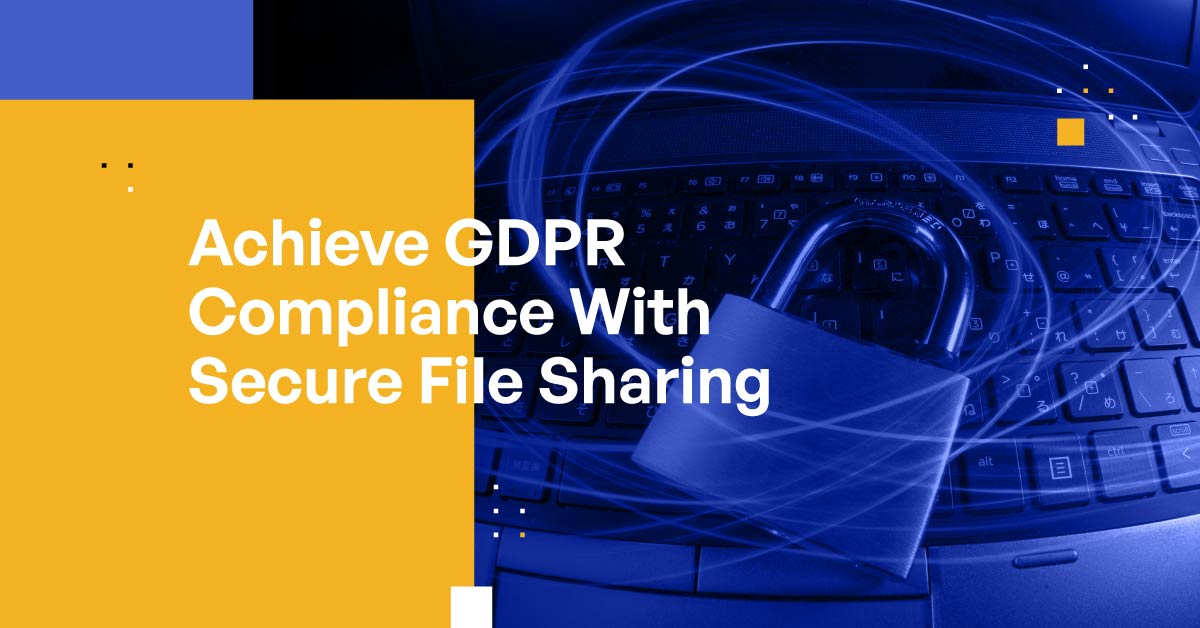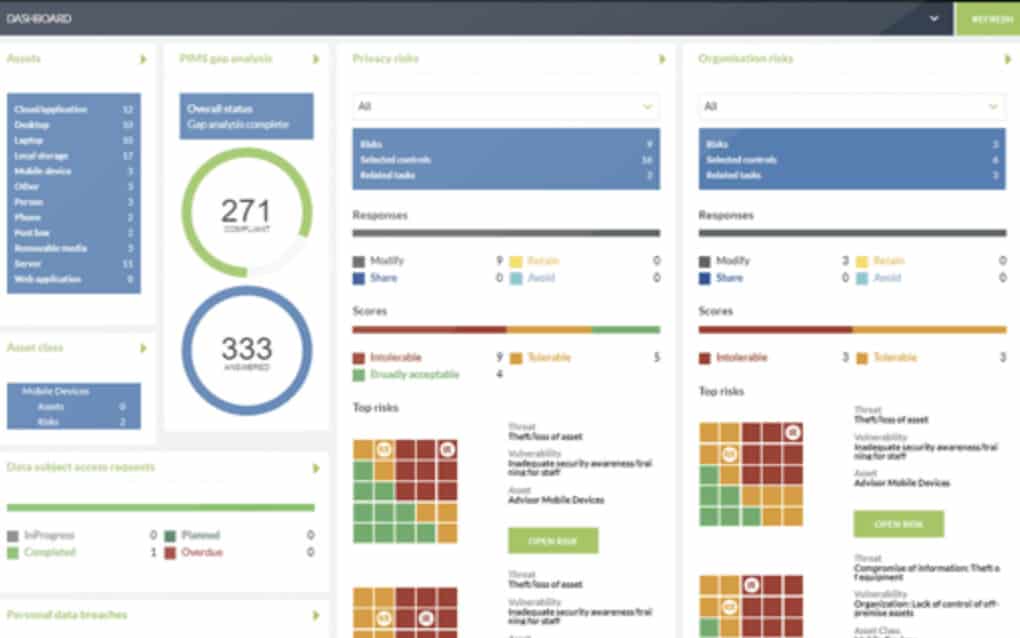File sharing compliance software for GDPR: Ensuring Data Protection and Security
Exploring the realm of File sharing compliance software for GDPR, this introduction delves into the intricacies of ensuring data protection and security in a digital landscape filled with challenges. It highlights the significance of compliance with GDPR regulations and the pivotal role that file sharing compliance software plays in achieving this goal.
Furthermore, it sheds light on the key features that businesses should look for in such software to navigate the complexities of data sharing while adhering to stringent regulations.
Overview of File Sharing Compliance Software for GDPR
File sharing compliance software is designed to help businesses ensure that their file sharing practices are in line with the General Data Protection Regulation (GDPR). This software plays a crucial role in protecting sensitive data and maintaining compliance with the strict regulations set forth by GDPR.
Purpose of File Sharing Compliance Software
- Secure file sharing: Ensures that files are shared securely within and outside the organization.
- Monitoring and tracking: Allows businesses to track file sharing activities and monitor data access.
- Encryption: Provides encryption features to protect data during transit and at rest.
Importance of GDPR Compliance in File Sharing
GDPR compliance is essential to protect the privacy and data of individuals. Non-compliance can lead to hefty fines and damage to the reputation of a business. File sharing compliance software ensures that businesses meet the stringent requirements set by GDPR when sharing sensitive information.
Key Features of File Sharing Compliance Software
- Access controls: Enables businesses to set permissions and restrict access to files based on user roles.
- Audit trails: Maintains detailed logs of file sharing activities for compliance purposes.
- Data loss prevention: Prevents unauthorized sharing of sensitive data and ensures data security.
How File Sharing Compliance Software Helps Businesses Adhere to GDPR Regulations
- Automated compliance checks: Conducts regular checks to ensure that file sharing practices align with GDPR requirements.
- Consent management: Manages user consent for data sharing and ensures compliance with GDPR consent guidelines.
- Incident response: Provides tools for quick response to data breaches and incidents to mitigate risks and maintain compliance.
Key Considerations when Choosing File Sharing Compliance Software
When selecting file sharing compliance software for GDPR, there are several key considerations to keep in mind. It is crucial to compare different options available in the market and ensure that the chosen software meets the essential criteria for GDPR compliance.
Data encryption and user access controls play a vital role in ensuring the security and protection of sensitive information.
Comparing Different File Sharing Compliance Software Options
- Consider the level of encryption offered by each software to protect data during transmission and storage.
- Evaluate the user-friendliness of the software interface to ensure ease of use for employees.
- Look for features such as audit trails and reporting capabilities to monitor file access and ensure compliance with GDPR regulations.
The Role of Data Encryption in File Sharing Compliance Software
- Data encryption helps secure sensitive information by encoding it in a way that only authorized users can access it.
- End-to-end encryption ensures that data remains protected throughout its entire transfer process.
- Choosing software with strong encryption protocols is essential for GDPR compliance and data security.
User Access Controls for GDPR Compliance
- Implementing user access controls allows organizations to restrict access to files based on user roles and permissions.
- Role-based access ensures that employees only have access to the files necessary for their job functions.
- Audit trails can track user activity and help organizations demonstrate compliance with GDPR regulations.
Implementation of File Sharing Compliance Software

Implementing file sharing compliance software involves several key steps to ensure GDPR compliance within an organization. It is crucial to follow a structured approach to successfully integrate the software into existing systems and workflows.
Steps Involved in Implementing File Sharing Compliance Software
- Conduct a thorough assessment of current file sharing practices and identify potential risks and non-compliance issues.
- Select a suitable file sharing compliance software solution that aligns with GDPR requirements and the organization's needs.
- Customize the software configuration to meet specific GDPR compliance requirements, such as data encryption, access controls, and audit trails.
- Integrate the software seamlessly with existing IT infrastructure and ensure compatibility with other systems and applications.
- Train employees on using the software effectively for secure file sharing and GDPR compliance.
- Regularly monitor and review the software implementation to identify any gaps or issues and take corrective actions as needed.
Examples of Successful GDPR Compliance Software Implementations
One successful implementation of file sharing compliance software is seen in a multinational corporation that effectively integrated the software across its global offices, ensuring consistent data protection practices and GDPR compliance.
Challenges Organizations May Face During Implementation
- Resistance from employees to adopt new software and change existing file sharing practices.
- Integration issues with legacy systems and complex IT environments.
- Lack of expertise in configuring and managing the file sharing compliance software effectively.
- Ensuring continuous compliance with evolving GDPR regulations and requirements.
Importance of Training Employees on Using the Software for GDPR Compliance
- Training employees on the use of file sharing compliance software is essential to ensure they understand the importance of data protection and comply with GDPR regulations.
- Proper training can help employees avoid common pitfalls and mistakes that may lead to data breaches or non-compliance issues.
- Regular training sessions can also keep employees updated on the latest features and best practices for secure file sharing within the organization.
Benefits of File Sharing Compliance Software for GDPR Compliance

Using file sharing compliance software can offer numerous benefits when it comes to achieving GDPR compliance. This software plays a crucial role in ensuring data protection and security, ultimately helping organizations avoid costly violations of GDPR regulations.
Advantages of File Sharing Compliance Software
- Ensures secure sharing of sensitive data: File sharing compliance software provides encryption and access controls, keeping confidential information safe from unauthorized access.
- Automates compliance processes: By automating compliance tasks, such as monitoring data usage and access, the software helps organizations stay in line with GDPR requirements without manual intervention.
- Enhances audit capabilities: File sharing compliance software maintains detailed logs of file activities, making it easier to track data usage and demonstrate compliance during audits.
Data Protection and Security
- Prevents data breaches: By implementing stringent security measures, such as encryption and user authentication, file sharing compliance software reduces the risk of data breaches that could lead to GDPR violations.
- Secures data transfer: The software ensures that data shared internally or externally is encrypted, minimizing the chances of interception or unauthorized access during transmission.
Real-life Scenarios
- In a case where an employee accidentally shared sensitive customer data with an unauthorized recipient, file sharing compliance software detected the unauthorized access and prevented a potential GDPR violation.
- Another scenario involved a cyberattack targeting a company's file sharing system. The software's security features thwarted the attack, safeguarding the organization's data and ensuring GDPR compliance.
Cost-saving Benefits
- Reduces compliance costs: Investing in GDPR-compliant file sharing software can help organizations avoid hefty fines for non-compliance, ultimately saving money in the long run.
- Minimizes data breach expenses: By preventing data breaches and the associated costs of remediation and damage control, file sharing compliance software contributes to significant cost savings for organizations.
Conclusion

In conclusion, File sharing compliance software for GDPR stands as a beacon of hope for businesses striving to maintain GDPR compliance. By embracing the advanced features and functionalities of this software, organizations can safeguard their data, prevent violations, and streamline their operations in a secure manner.